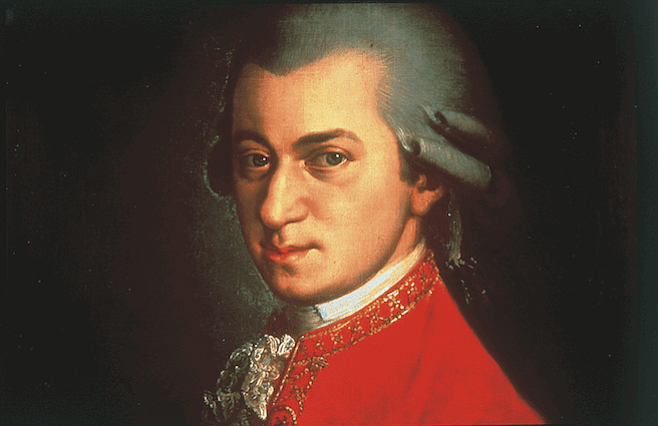 Facebook
Facebook
 X
X
 Instagram
Instagram
 TikTok
TikTok
 Youtube
Youtube

Who would like to listen to an hour of of Mozart? How about 127 hours of Mozart? There is a now a playlist which will give you that.
Open Culture mentioned this little gem which is to be found on Spotify. The playlist says that it is based on K6.
This brings up the question — what is K6?
Remember the numbering debacle that is the Mendelssohn symphonies? Now think about numbering Mozart’s music in order to have a quick and easy way to refer to it. In the 19th century, opus numbers were used to track the course of compositions but that was not as much the case in the 18th century.
There were a few attempts to create a catalogue of Mozart’s music after his death in 1792, but the catalogue we use today wasn’t completed until 1862. The individual who put it together was Ludwig von Köchel.
Köchel assigned a number to each of Mozart’s compositions and tried to keep it in chronological order. The order of Mozart’s music was fairly clear after 1784 but Köchel was guessing on the order previous to that.
Each of Mozart’s pieces of music now has a Köchel or "K number.” Mozart’s Requiem is the final piece in the catalogue and is numbered K626.
K6 refers to the sixth version of Köchel’s catalogue. As new pieces of Mozart’s music have been discovered, they have been added to the catalogue by musicologists.
The 127-hour playlist contains almost every piece in the Köchel Catalogue. It is interesting to hear Mozart’s music develop. The first pieces on the playlist were composed when he was five years old. The concluding pieces were composed when he was 35 years old.


Who would like to listen to an hour of of Mozart? How about 127 hours of Mozart? There is a now a playlist which will give you that.
Open Culture mentioned this little gem which is to be found on Spotify. The playlist says that it is based on K6.
This brings up the question — what is K6?
Remember the numbering debacle that is the Mendelssohn symphonies? Now think about numbering Mozart’s music in order to have a quick and easy way to refer to it. In the 19th century, opus numbers were used to track the course of compositions but that was not as much the case in the 18th century.
There were a few attempts to create a catalogue of Mozart’s music after his death in 1792, but the catalogue we use today wasn’t completed until 1862. The individual who put it together was Ludwig von Köchel.
Köchel assigned a number to each of Mozart’s compositions and tried to keep it in chronological order. The order of Mozart’s music was fairly clear after 1784 but Köchel was guessing on the order previous to that.
Each of Mozart’s pieces of music now has a Köchel or "K number.” Mozart’s Requiem is the final piece in the catalogue and is numbered K626.
K6 refers to the sixth version of Köchel’s catalogue. As new pieces of Mozart’s music have been discovered, they have been added to the catalogue by musicologists.
The 127-hour playlist contains almost every piece in the Köchel Catalogue. It is interesting to hear Mozart’s music develop. The first pieces on the playlist were composed when he was five years old. The concluding pieces were composed when he was 35 years old.
Comments